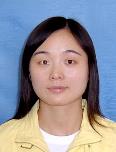
Rong Qian
National Center for Inorganic Mass Spectrometry in Shanghai, China
Title: Signal Enhancement with Stacked Magnets for High-Resolution Radio Frequency Glow Discharge Mass Spectrometry
Biography
Biography: Rong Qian
Abstract
A method for signal enhancement utilizing stacked magnets was introduced into high-resolution radio frequency glow discharge-mass spectrometry (rf-GD-MS) for significantly improved analysis of inorganic materials. Compared to the block magnet, the stacked magnets method was able to achieve 50−59% signal enhancement for typical elements in Y2O3, BSO, and BTN samples. The results indicated that signal was enhanced as the increase of discharge pressure from 1.3 to 8.0 mPa, the increase of rf-power from 10 to 50 W with a frequency of 13.56 MHz, the decrease of sample thickness, and the increase of number of stacked magnets. The possible mechanism for the signal enhancement was further probed using the software “Mechanical APDL (ANSYS) 14.0”. It was found that the distinct oscillated magnetic field distribution from the stacked magnets was responsible for signal enhancement, which could extend the movement trajectories of electrons and increase the collisions between the electrons and neutral particles to increase the ionization efficiency. Two NIST samples were used for the validation of the method, and the results suggested that relative errors were within 13% and detection limit for six transverse stacked magnets could reach as low as 0.0082 μg g−1. Additionally, the stability of the method was also studied. RSD within 15% of the elements in three nonconducting samples could be obtained during the sputtering process. Together, the results showed that the signal enhancement method with stacked magnets could offer great promises in providing a sensitive, stable, and facile solution for analyzing the nonconducting materials.

